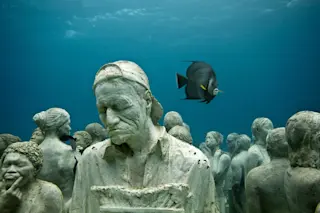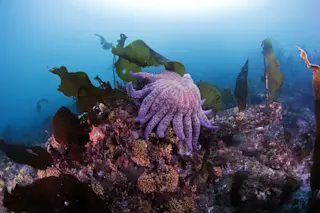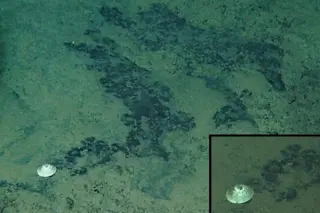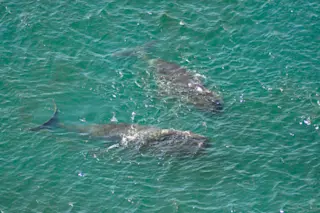Here, The Silent Evolution is shown being installed. Sculptures are grouped into modules to increase the speed and safety of installation.Once the module hits the seafloor it is slowly moved into position.
The sculptures are made with carefully researched environmentally-friendly materials which actively promote coral growth, with inert Ph neutral properties designed to last hundreds of years.
The mirror-finished piano in The Musician (2011) is based on an actual-size replica of a Steinway Concert Grand.The sculpture, located in Musha Cay, Bahamas, also incorporates spaces that are designed to encourage habitation by marine species. A small hermit crab can be seen crawling across the keys.
The Bankers (2011) symbolize denial: a resistance to acknowledge our looming environmental crisis, and the shortsighted actions of banking and government institutions.The installation is located in Manchones Reef, Mexico. The buttocks provide an internal living space for crustaceans and juvenile fish.
Vicissitudes (2007), has had plenty ...














